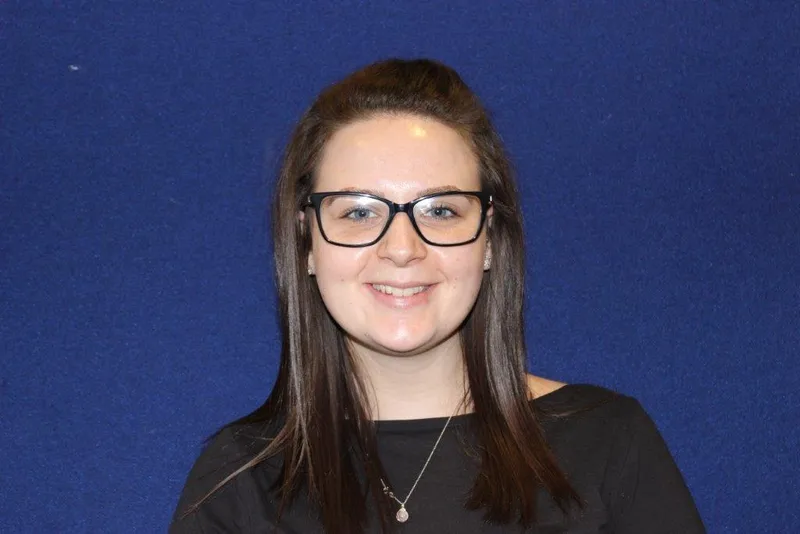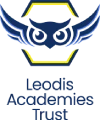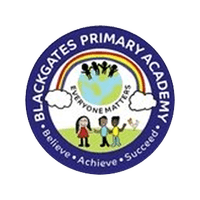
Lead: Georgina Gutteridge

Curriculum Intent
At Blackgates Primary Academy, we offer children a Design and Technology curriculum which will equip them for life-long learning – both that of life in the modern world and knowledge about how to life a healthy lifestyle.
In Early Years children begin developing their design, construction and evaluating skills both through continuous provision and through specific topics. The construction area is always available to children and offers a variety of objects to design and make structures with, such as wooden building blocks, construction rods and stickle bricks. Through modelling and questioning, adults encourage children to think about the purpose of their design and encourage them to evaluate it to ensure it is fit for purpose.
The topic, ‘How do inventors change the world?’ has a specific design and technology focus. In Little Ducklings, children will question and investigate how things in their immediate environment work, developing their vocabulary. Adults will model and encourage language such as push, pull, twist, turn, spin and switch to talk about how toys and objects work, developing the children’s understanding and their inquisitive minds. In Nursery this knowledge is built on to think about designing products for a specific purpose, when children investigate the sounds musical instruments make and use the ideas they have gathered to make their own instruments which make sound. In Reception, children consider what they can invent and for a specific purpose, selecting from the materials available to them. Throughout Early Years, adults will question children about their designs and products, encouraging them to make adjustments as they go.
In Autumn Term, Year 1 children will learn about their local environment. In doing this, they will develop scientific knowledge about the habitats of minibeasts at Ardsley Reservoir and local woodland areas. They will use this knowledge to design, make and evaluate homes for minibeasts, considering their needs and being resourceful with natural materials. They will use mathematical knowledge and skills in this process as well as their scientific knowledge.
Also in Key Stage 1, children begin to learn about their bodies in Science in the second half of the Autumn term. Their D.T. knowledge will be developed in this topic by looking at how diet and nutrition contributes to keeping our bodies healthy. This knowledge will be built on in Key Stage 2, in years 4 and 5, when children take a more in depth look at the importance of having a balanced diet and its impact on the human body, again supporting their work in Science. They will develop knowledge about how to design and make healthy meals that they could cook at home and the nutritional value of these. They will build on this in Year 5 when they look at the nutrition athletes and sports people need to improve stamina and endurance. Throughout these units, children will evaluate the nutritional value of products aimed at different markets and design their own meals to cook. They will also gain knowledge about where their food comes from.
The topic ‘How do inventors change the world?’ is key to developing children’s D.T. knowledge, skills and concepts. This begins in Key Stage 1 when children look at the earliest inventions in the Stone Age and the Iron Age, moving to learning about significant inventions and inventors over time. Throughout this unit in all both key stages pupils will:
- Evaluate existing products from innovative designers
- Use their creativity, imagination and practical skills to design products for a specific purpose which solve real life problems
- Work to a design brief
- Develop technical knowledge and skills they will be able to apply to other situations
- Make prototypes
- Evaluate their own products, making improvements.
An essential learning point from this topic links to the ‘Believe’ aim of our school. Children will gain an understanding of the resilience, perseverance and high aspirations of famous inventors such as Sir James Dyson and Steve Jobs. Children experiencing what it is like to fail, just as these inventors did hundreds of times, yet remain motivated to achieve their goals, will allow them to take these skills forward in their life so that they can achieve and succeed.
Across all year groups, we want pupils to develop the following D.T. concepts:
- Creativity and innovation
- Problem solving and adaptation
- Evaluating
- Purpose and suitability
- Goal setting
- Resilience, perseverance and motivation.
Cooking in the Curriculum at Blackgates.
At Blackgates, we offer an exciting cooking curriculum to engage our children of all ages to develop skills to prepare, make and cook dishes that are both sweet and savoury. We teach the children how to use specific skills to prepare ingredients safely to ensure they are using the equipment correctly to achieve the best dish they can. Such skills include using: the bridge, the claw, grating, peeling, a combined bridge and claw grip and have been taught how to prepare small ingredients, such as garlic. As a result, the children have produced foods with well prepared ingredients.
It has also been lovely to hear how the children have been using these skills to prepare dishes with their families at home too and if you have any photos of your child cooking at home, please email the photos in to our school email address info@blackgates.leodis.org.uk
Year 1 Fruit Faces
The children in Year 1 have learned how to prepare some different fruits safely using an appropriate knife. The children were taught how to hold the equipment carefully and used the bridge grip to cut their pieces of fruit. They then arranged these pieces of fruit to create a face. Take a look to see how the children got on - from the children's faces we think they enjoyed this task!
Whole School Shrove Tuesday Project
To celebrate Shrove Tuesday this year, all classes across the school took part in a cooking DT project based around pancakes.
The children in EYFS and KS1 took part by adding different toppings to their pancake and evaluating what they liked and disliked about them. In Years 3 and 4, the children added different ingredients to adapt their pancake recipe. Their favourites were chocolate chips and blueberries! In Years 5 and 6, the children explored using savoury toppings to make a pancake recipe suitable for breakfast. They prepared and cooked mushrooms, tomatoes and bacon to them and were surprised how nice they were as a savoury treat!
Year 5 Cooking
In Year 5, the children have prepared and made a Greek tzatziki dip. They used the claw and bridge technique to cut and slice their ingredients carefully, to avoid cutting any fingers.
The children tasted a range of different dips with pitta breads, crisps and cucumbers to explore the different flavours.
Year 4 Healthy Vegetarian Recipes
Children in Year 4 have designed their own healthy recipe, suitable for a vegetarian diet, as part of their cooking project this half term with links to the Science curriculum too. The children planned which ingredients they wanted to use by considering which ingredients are in season now and used these to prepare and bake their own stuffed pepper. The children loved tasting them afterwards too! Yummy!
DT Club
Children in Year 5 and 6 having been taking part in a DT club for the last term. We have designed and make bird houses for our school grounds. The children looked at different examples of bird houses that were already made to get inspiration and thought about how they were constructed. They then thought about their measurements to cut and prepare their wood to make a frame and then used hot glue to attach lolly pop sticks and wood to form the sides.
Year 1 Conker Containers
In Autumn 1, the children in Year 1 learned about the local environment around our school. During this unit, the children designed and made a conker container to take with them on their local area walk to collect conkers that they found along the way. The children thought carefully about the types of materials they could use to make to ensure it would be strong enough to hold the conkers and to include a handle that they could use to help them carry it. They also made sure to decorate it effectively to show their individuality and creativity too. The children were very excited to share everything that they found on their adventure!
Year 2 - Moving Vehicles for Traction Man.
IIn Year 2, the children investigated into moving vehicles to design, make and evaluate their own vehicle for Traction Man to use to collect his friends from the story the children were learning about. The children investigated into different materials to use to create an axle, they were testing to see how to make a strong axle rod and suitable wheels for their buggy. Take a look to see how they got on:
Year 2 Textiles - Stone Age Tabard
The children in Year 2 have designed and made a tabard using their textiles skills suitable for a Stone Age child. They looked at clothes that had already been made and followed the seams to see where the pieces of fabric had been joined. They had great fun undoing them to see the individual pieces too. They could then construct a design brief to follow to ensure they could make a piece of clothing, in the style of a tabard, suitable for a Stone Age child. They knew they needed to make their garments from fur to mimic using animal skin and used a running stitch with a needle and thread to join the materials. Before making, the children tested different types of needles, including metal and plastic, and threads of different levels of thickness. Using this, they could then choose a suitable needle and thread type that they most felt comfortable using.
If you are lucky enough to visit our school, take a look at some of the finished products in our glass showcase by the entrance.
Year 3 Sarcophagus
As part of the Year 3 Egyptians topic, the children were set a challenge to create a sarcophagus that could open with a lid and a hinge using a pneumatic mechanism.
The children tested different ways of using pneumatics using balloons and syringes and decided using a syringe would be the most effective way to open the sarcophagus lid.
The children then used their knowledge of Egyptian tomb designs to decorate them to suit their purpose.
Well done Year 3!
Year 3 Textiles Beach Bags
In Summer 2, the children in Year 3 developed their skills in textiles to design, make and evaluate a bag that would be suitable to carry their money to the beach. The children thought about how they wanted their bags to look and planned how they could create and attach a handle that would make the bag usable and added buttons on to them to keep their pocket money safe at the seaside. They had some amazing and creative ideas and really enjoyed applying their sewing skills they had previously learned in Year 2 and improving them by sewing on buttons and other decorations. Their favourite part of the project was using them at the seaside when they went to visit as part of our curriculum. Great work!
Year 4 Roman Catapults
In Year 4, the children designed, made and tested a catapult that would be suitable to help the Romans. The children worked hard to plan, measure and cut their wood needed for the frame and tested the best materials to use to help the catapult fling objects the furthest.
The children found that elastic materials were best to pull the catapult back and throw objects into the air. They worked amazingly in their groups and enjoyed working with wood.
If you ever visit our school, you will find examples of the catapults in the glass case of our work in the school entrance.
Year 4 Lighthouses
In Summer 2, the children in Year 4 designed and made their own lighthouses that included electrical circuits that could be used to alert attention and to warn sailors of the land ahead. The children investigated into the use of lighthouses and where they are built and when they visited Scarborough, they thought about where their own lighthouse could be built. The children used their art and creativity to think about the colour, design and used mod-roc to ensure their structure was strong and stable and then fitted their electrical circuits to them and included a bulb. Take a look at the lighthouses they made.
Year 5 Textiles - Blanket Making
In Year 5, the children have evaluated blankets, designed and made their own blanket to use on the beach. The children started the project by evaluating a range of different blankets to decide which materials are most appropriate to use on the beach and how they would be transported. They then formed a design criteria to use when making their own design. They practised their running stitch as previously learned and were taught how to create a blanket stitch to use on their design. The children then used the computer to create and print an image that was ironed onto their work to personalise it to their own taste. When finished, we took the blanket to Bridlington to test it out on the beach. See our photos to see how we got on.
Year 5 Moving Vehicles
The children in Year 5 have been using their design and making skills to design, make and evaluate a moving vehicle suitable for the planet Pandora. The children have absolutely loved this topic and worked collaboratively to apply a range of skills to create a moving vehicle. The children started by testing different moving vehicles that are already made, including beebots and remote control cars. They thought about the axles and the drawbacks of these products after testing them on a range of different surfaces. They then constructed a design brief to follow to ensure their buggy would be suitable for the terrain of Pandora, have a working axle and to include an electric circuit to power it. The children worked in pairs to make a range of axles using different materials to decide which would be best for their buggy and then used their woodwork skills to construct a frame. Once complete and decorated, the children used their knowledge of electricity and circuits from Year 4 to fit a working circuit with a battery and a motor. The motor was then connected to the axle to allow the vehicle to move successfully. Finally, the children were able to programme a circuit board using a programme called Crumble which allowed them to set an algorithm that the motor then followed.
Year 5 Computer Aided Design
In Year 5, the children have been using design software on the computer to create computer aided designs to help them design and make their axles to use in their space buggy unit. The children used TinkerCAD which enabled them to create exploded diagrams of axles as they thought about where the different components of the axles would join.







